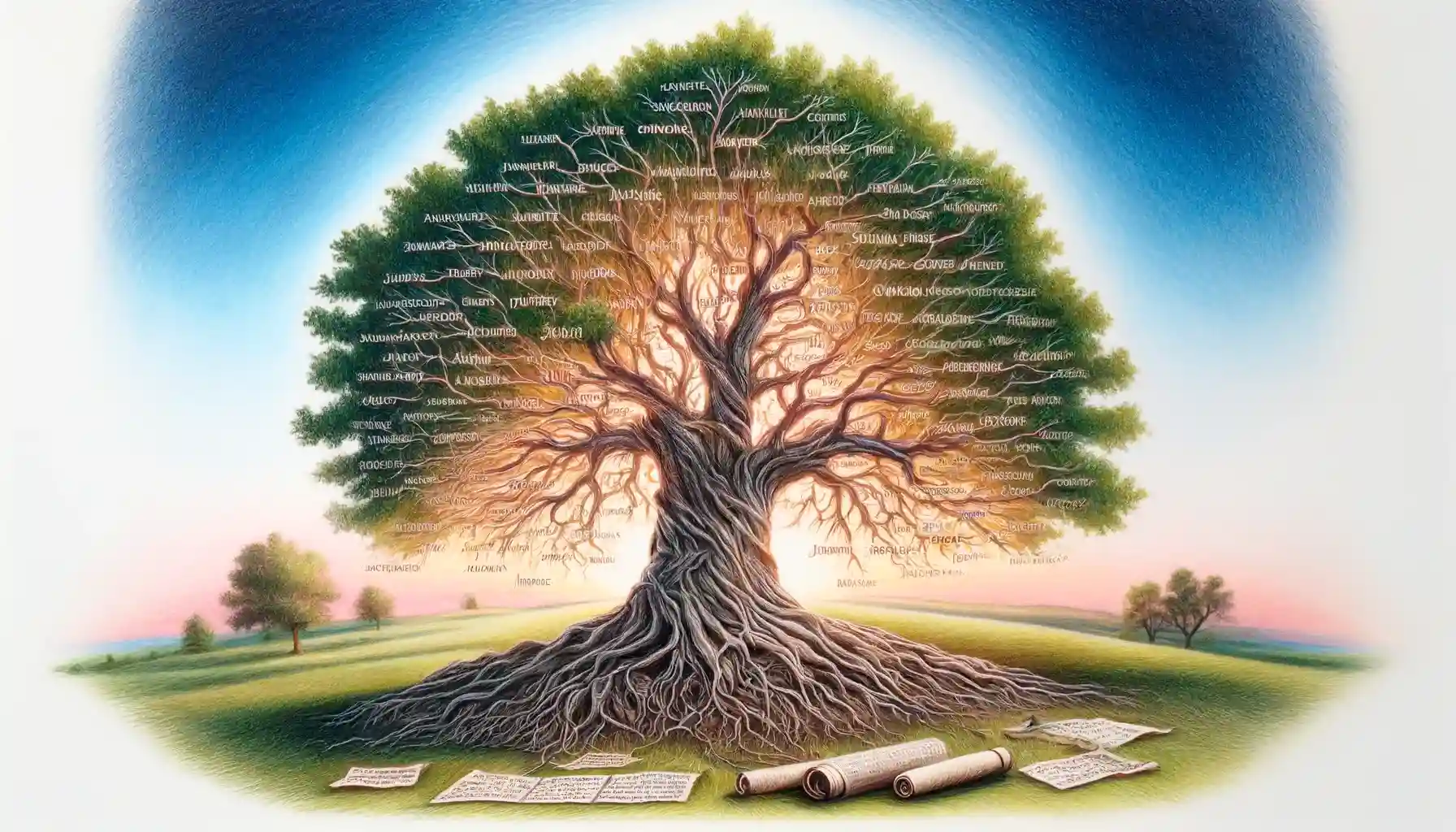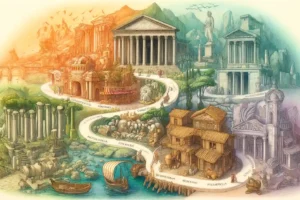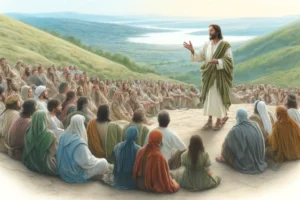
The Genealogy of Jesus Christ
The genealogies of Jesus Christ, as presented in the Gospels of Matthew and Luke, trace Jesus’ lineage through distinct lines and purposes. These genealogies establish Jesus’ rightful place in Jewish history and fulfill Old Testament prophecies about the Messiah.
Quick Facts
- Two Accounts: The genealogy of Jesus is detailed in Matthew 1:1-16 and Luke 3:23-38, with each account tracing different ancestries.
- Matthew’s Lineage: Matthew’s genealogy traces Jesus’ lineage through Joseph, Jesus’ legal father, emphasizing Jesus’ royal descent from King David and Abraham.
- Luke’s Lineage: Luke’s genealogy traces Jesus’ lineage through Mary, highlighting Jesus’ humanity and connection to all of humankind, going back to Adam.
- Four Women: Matthew includes four women in his genealogy—Tamar, Rahab, Ruth, and Bathsheba (referred to as the wife of Uriah)—each with unique stories that highlight God’s grace.
- Purpose of Matthew’s Account: Matthew’s account is structured to show Jesus as the Messiah, fulfilling Jewish prophecies, and is divided into three sets of fourteen generations.
- Purpose of Luke’s Account: Luke’s genealogy emphasizes Jesus as the Son of God and connects Him to all humanity, fitting with Luke’s theme of Jesus as the Savior for all people.
- Differences in Names: The names in the two genealogies differ significantly, with Matthew focusing on the legal lineage through Joseph and Luke providing a biological lineage through Mary.
- Symbolic Numbers: The structure of Matthew’s genealogy (three sets of fourteen generations) may symbolize completeness and God’s plan for salvation history.
- Theological Significance: Both genealogies together present a comprehensive picture of Jesus’ identity as both the promised Jewish Messiah and the Savior of all humanity.
- Legal and Biological Descent: The genealogies affirm Jesus’ legal right to the throne of David (through Joseph) and His true human nature (through Mary).
The genealogies of Jesus Christ in the Gospels of Matthew and Luke provide a profound insight into His identity and mission. By examining these genealogies, we can understand the theological, historical, and prophetic significance they hold.
Genealogies in Matthew and Luke
Matthew’s Genealogy (Matthew 1:1-16):
- Focus and Structure: Matthew begins with Abraham, the father of the Jewish nation, and traces the lineage through King David to Joseph, Jesus’ legal father. The genealogy is structured into three sets of fourteen generations, emphasizing symmetry and completeness.
- Royal Descent: This account highlights Jesus’ royal heritage, affirming His legal right to the throne of David, essential for the fulfillment of Old Testament prophecies regarding the Messiah.
- Inclusion of Women: Unique to Matthew’s genealogy is the inclusion of four women—Tamar, Rahab, Ruth, and Bathsheba—each with significant and often complex backgrounds, illustrating God’s grace and sovereignty.
Luke’s Genealogy (Luke 3:23-38):
- Focus and Structure: Luke’s genealogy traces Jesus’ ancestry in reverse order, starting with Jesus and going back to Adam. This emphasizes Jesus’ connection to all of humanity.
- Universal Savior: By linking Jesus to Adam, Luke presents Jesus as the Savior for all people, not just the Jews, aligning with his theme of Jesus’ universal mission.
- Biological Descent: This genealogy likely follows Mary’s lineage, emphasizing Jesus’ true human nature and biological descent from David through Nathan, a lesser-known son of David.
Theological Significance
Messianic Credentials:
- Fulfillment of Prophecy: Both genealogies affirm Jesus as the promised Messiah. Matthew emphasizes His legal right to David’s throne, crucial for Jewish Messianic expectations, while Luke underscores His role as the second Adam, relating to all humanity.
- God’s Redemptive Plan: The structure and details of the genealogies reflect God’s meticulous planning and sovereignty in bringing forth the Messiah through varied and often unexpected circumstances.
Symbolic Elements:
- Number Fourteen in Matthew: The division into three sets of fourteen generations may symbolize completeness and perfection in Jewish numerology, underscoring the divine orchestration of salvation history.
- Inclusion of Non-Israelites: The mention of women like Rahab and Ruth, who were not Israelites, highlights the inclusive nature of Jesus’ mission and God’s plan for redemption that transcends ethnic boundaries.
Historical and Cultural Context
Historical Validation:
- Lineage Verification: Genealogies were crucial in Jewish culture for validating heritage and legal claims, especially concerning the priesthood and kingship. These genealogies would have served as vital records to confirm Jesus’ rightful place in Jewish history.
Cultural Impact:
- Acceptance of Jesus’ Claims: For early Jewish Christians, these genealogies provided a foundation to accept and proclaim Jesus as the Messiah, fulfilling Old Testament prophecies.
- Inclusivity and Grace: The diverse backgrounds of individuals in Jesus’ lineage, including women with morally complex stories, demonstrate God’s grace and the breaking of social and cultural barriers in His redemptive plan.
Differences and Complementarity
Contrasting Lineages:
- Legal vs. Biological: Matthew provides a legal genealogy through Joseph, establishing Jesus’ royal lineage, while Luke’s account through Mary emphasizes His biological descent.
- Names and Generations: The differences in names and the number of generations between the two accounts highlight different theological emphases and purposes, rather than contradictions.
Harmonizing the Accounts:
- Dual Perspectives: Together, the genealogies present a comprehensive picture of Jesus’ identity as both the Jewish Messiah and the Savior of all humanity. They reflect different aspects of His mission and the fulfillment of God’s promises from both a legal and human perspective.
Conclusion
The genealogies of Jesus in Matthew and Luke are rich in theological, historical, and cultural significance. They affirm Jesus’ dual identity as the Messiah of Israel and the universal Savior, fulfilling God’s promises and connecting Him to all humanity. The inclusion of diverse and unexpected figures in His lineage underscores the grace and inclusivity of God’s redemptive plan, offering a profound insight into the nature of Jesus’ mission and the fulfillment of biblical prophecy.



